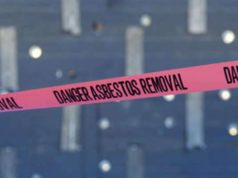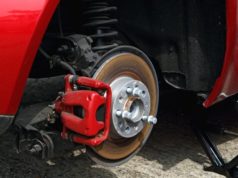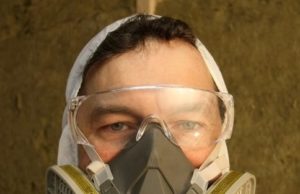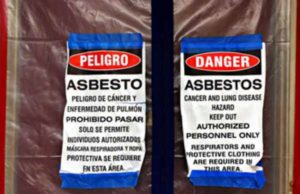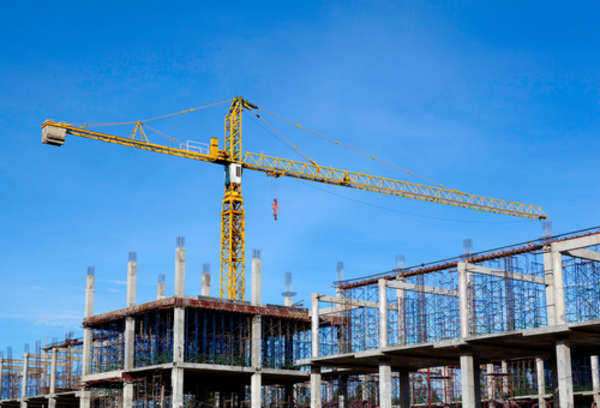
Normal Demolition practices Under the Asbestos NESHAP
It is important to note that while the demolition procedures under the National Emissions Standards for Hazardous Air Pollutants have not changed significantly in the past twenty years, there is an important classification that should be noted for all structures undergoing demolition. In 1990, the NESHAP was revised to include some non-friable materials as hazardous material that needs to be removed from the structure. This is relevant, as experts found that ordinarily solid, non-friable material, once crumbled, can form a fine dust that has the same properties as friable asbestos. The aftermath of the 9/11 terrorist attack demonstrates just how dangerous this dust can be, as many that were exposed to this hazard have developed asbestos related illnesses a matter of years rather than decades after exposure.
Differences in classification
The 1990 revision to the NESHAP split non-friable materials into two categories. Category I will cover materials that do not need to be removed from a structure during a demolition due to its durability. This includes most types of floor tiles, gaskets, roofing tiles made of asphalt and certain types of insulating packing. All category I items cannot be crumbled or powdered with sufficient force. Category II, on the other hand, is any non-friable material that will be crumbled such as cement containing asbestos materials.
Category II material can generally remain in a structure as its durable state ensures that asbestos fibers do not escape from its protective barrier. Some renovations will require the removal of Category II material, as drilling, sanding or breaking the non-friable material will cause powdering and crumbling, which is a clear and dangerous health hazard.
Important definitions related to demolition in the Asbestos NESHAP
Adequately wet – this describes the process of friable asbestos removal that involves waterlogging the material. Asbestos is soft and easily scraped. Scraping however, frees tiny, airborne particles. Not surprisingly, these particles remain in the air for a long time after their release and if they are lodged in the lungs, remain there for decades. Ensuring that friable asbestos is adequately wet during abatement and especially during transport to disposal is a critical part of the normal demolition practices under the Asbestos NESHAP.
Asbestos abatement – this describes the process where asbestos materials are removed from a building and adequately disposed. It may also refer to a sealing or enclosure procedure to encase friable material in an indurate barrier. Enclosure is not an option in a demolition due to the likelihood that the seal around the contained asbestos will be compromised.
Asbestos containing materials – all materials containing 1% asbestos by weight are considered asbestos containing materials. Once this material is removed, it is considered asbestos containing material waste. Regulated asbestos containing material generally describes all friable and some non-friable asbestos that may become dangerous, generally Category II materials.
Demolition – for the purposes of regulation, any construction that involves removing any load supporting material from a facility. Burning structures for fire training is considered a demolition. It is important to note that due to its silicate nature, asbestos does not burn and can be released from a burning structure.
Renovation – includes asbestos removal but does not include any removal or alteration to the structural support materials in a building.
Visible emissions – a highly dangerous event that describes the release of asbestos material from an exposed, friable source. No testing is required in a visible emission since, as the name implies, the particles released can be seen with the naked eye. Visible emissions generally constitute an emergency situation that will allow typical waiting periods and other restrictions to be bypassed in favor of immediate abatement.
Waste shipment record – this is an essential document that tracks the movement of the asbestos containing material from the waste generator to the disposal site. Generally, the disposal site must verify the quantity and nature of the asbestos waste before certifying the waste shipment record.
Why are certain asbestos materials allowed to remain in structures?
The EPA recognizes certain materials as “resilient,” particularly floor coverings. Materials made of vinyl or asphalt, as asbestos tiles typically are, will not break apart, even under the stress of demolition. It is important to note that with roofing in particular, the tiles may lay on top of very friable asbestos wool that serves as insulation. Therefore, while some asbestos materials may remain in the structure, more often than not, adequate precautions will need to be taken if they are indeed removed from the demolition site.
Compliance with state law
All state laws related to asbestos abatement must be in line with the normal demolition practices under the Asbestos NESHAP. This is achieved through inspection and notification requirements. The inspector will inspect the structure for possible friable and non-friable asbestos. The results of this are reported to the appropriate state or local authority, which will certify the plans for abatement after nothing the nature and extent of asbestos in the structure.
Inspectors and compliance professionals, all certified by the state will supervise asbestos abatement on a needs basis. Compliance with the NESHAP also hinges on following regulations for worker safety, which are set by the Occupation Health and Safety Administration.
Private homeowners and owners of small buildings are not covered by most of the normal demolition practices under the Asbestos NESHAP. The simplified version of the NESHAP demolition regulations, which is available on the EPA website, will provide a valuable resource to understanding the nature of asbestos in the home. Homeowners must comply with all disposal requirements set forth under the NESHAP and state law.
Provisions of the Asbestos NESHAP
The asbestos NESHAP discusses the number of ways each asbestos material can or should be removed as well as guidance on the appropriate measures. Generally speaking, all demolitions via machinery or explosion require the building to be thoroughly inspected and stripped of friable and Category II non-friable asbestos prior to forcible demolition. You will also find specific procedure for removing Category I materials if those materials are in poor condition.


